Regardless of the dog you have decided to share your life with, there are certain behavior challenges we all have to face. On a really bad day, it can be enough to make you want to scream. But, before you do, stop and think about these two things:
- Every dog owner has felt like you do – they got through it and so will you.
- Correction (yelling or other forms of punishment) don’t work. The dog usually doesn’t understand why he is being punished and/or it creates side-effects that are worse than the behavior you were trying to stop.
So take a deep breath and read these 7 common bad dog habits and tips on how to fix them.
#1 – Chewing
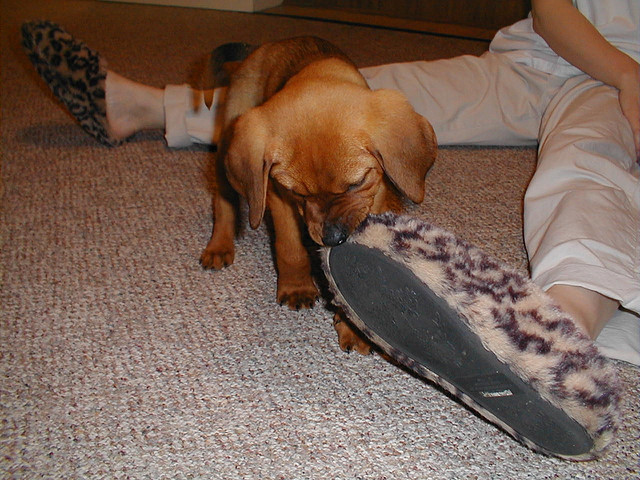
All puppies chew. So do adult dogs that were never taught better or who are bored. The first step is management. Don’t leave things around your dog can chew if they haven’t been taught any better. Next, have things on hand that are appropriate for them to chew and if they start to chew on something else, trade them objects.
When away, don’t leave your dog loose so they have a chance to practice the bad behavior. Reward them with praise and/or a treat when you see them making the right choice and chewing on a dog toy. Teaching a leave it and a drop cue can also help.
#2 – Jumping up
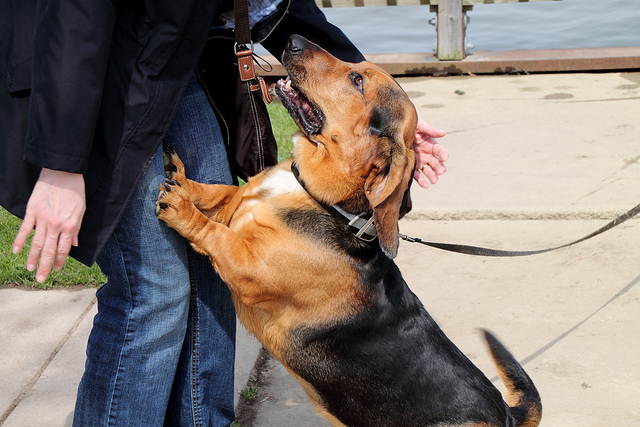
Dogs don’t see why this is a bad thing – they want to greet you and nine times out of ten, they get attention when they jump up. And therein lies the solution. If you want your dog to stop jumping up, make sure they do not get any attention (positive or negative!) when they clobber you. Instead, turn your body away and ignore them. When they have four-on-the-floor, then you can turn back and give them pets and praise.
You can also leave a leash on them so you can step on it and prevent them from jumping if you think your house guests won’t respect your rules or you are on a walk and strangers insist its “okay.” Remember, if you let your dog jump on one person, he is going to think it is okay to jump on everyone.
If you want to be able to allow him up now and then, put it on a cue. For my dogs, I pat my legs as a signal they can jump up.
#3 – Barking
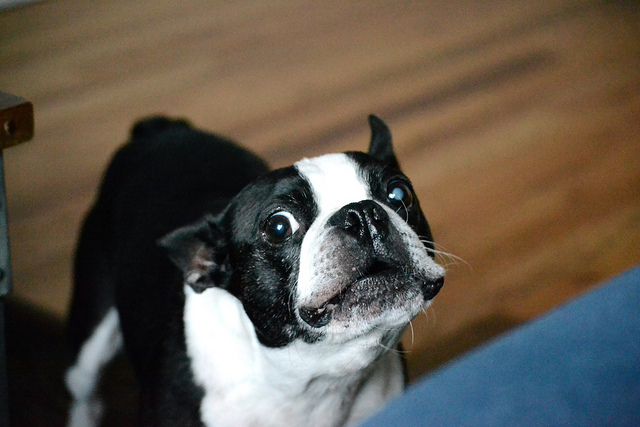
Barking is a BIG one and dogs bark for all kinds of reasons. In order to stop the barking, you have to know the why first. If they are barking out of fear, stress, or aggression, seek a professional trainer to help you. If your dog barks at noises (door bell, knock, kids playing outside), you need to work on noise sensitivity. Start with low sounds (like on a YouTube video) and reward your dog with toys, treats, and/or praise for not barking. Build up the sound volume and then move onto “real sounds” when you get to a loud enough level that you can replicate it in real life.
Have a demand barker? Don’t give in! The best way to stop a demand barker is to not given them what they want while they are barking. Wait until they are quite and calm, and then you can give them the toy, food, attention, etc. that they wanted.
#4 – Potting in the house
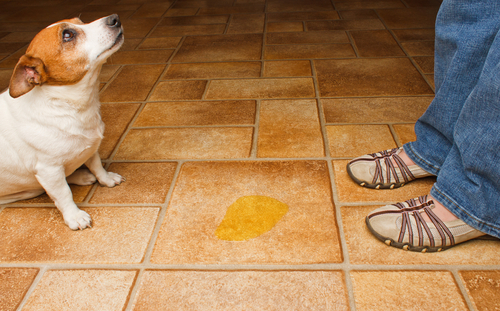
This is probably one of the biggest pet peeves; it’s also one of the top reasons dogs are relinquished to shelters each year. Whether it’s a puppy or an older dog that never learned, you want to start by giving them a limited area to live in (start small and gradually increase the size as the dog is successful). Keep them on a feeding schedule so you will know when they need to go out for a break. Also, take them for a potty break after playing, napping or drinking a lot of water.
I don’t recommend potty pads, as they can actually make the process take longer (since you are allowing your dog to soil in the house) unless you plan on using pads, a litterbox, or grass pads forever).
Keep your dog on a leash attached to you so you can watch him every minute.
Don’t punish! The old methods of rubbing the dog’s nose in it, spanking, etc., will only cause your dog to be fearful and possibly try to hide when he goes to the bathroom in the house. It won’t stop him from going.
#5 – Nipping
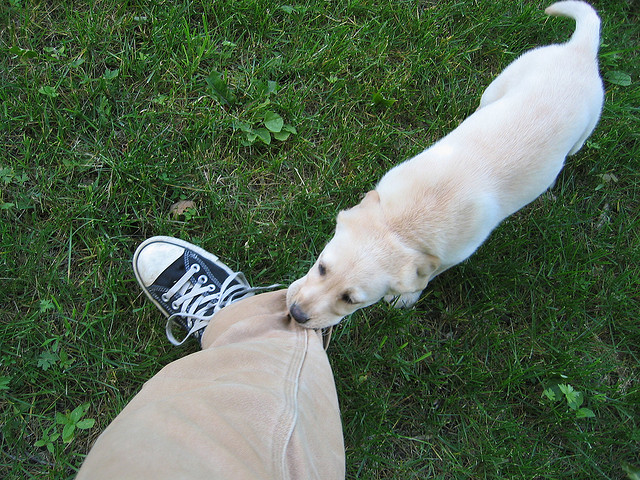
Most puppies nip at your heels and feet when you move, and your hands when you try to play with them. This is common and luckily pretty easy to fix.
For walking:
Stop immediately. Keep your dog on a leash so you can gently take them away from your leg. Wait until your dog is calm and then continue to walk or run. Treat/praise when your dog does not bite you.
You can also give them a toy to chew on – this worked for my youngest sheltie who has a lot of chase and bite drive.
For hands:
DO NOT PLAY WITH YOUR PUPPY WITH YOUR HANDS. Humans usually create this problem because we want to “wrestle” our puppies. But if we wrestle them like a littermate would, then we are going to also get treated like a littermate and that includes biting.
Instead, use a toy. If your puppy gets your hand instead of the toy, play stops. Take the toy and walk away.
In both cases, you can put your dog on a tie down (leash attached to something heavy) so you can walk away and they can’t follow you).
When he is calm, you can return and resume the game.
#6 – Leash pulling
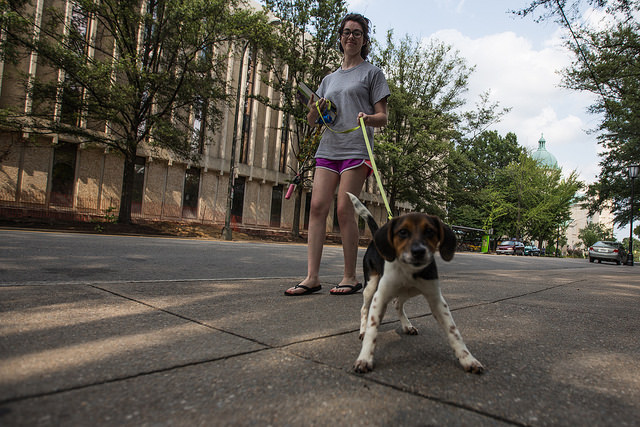
Another very common complaint. The best solution is just to stop when your dog starts pulling. Wait for him to come back to you and then continue to walk. If he stays by your side, praise and give him treats. You can also use training tools like a head halter or a front clasping harness.
The main thing is to never let your dog pull you to anything, it just rewards him for pulling. Instead, stop, wait for him to come back and then walk toward whatever he wants. This way, he learns the best way to get what he wants is to NOT pull.
#7 – Stealing Food
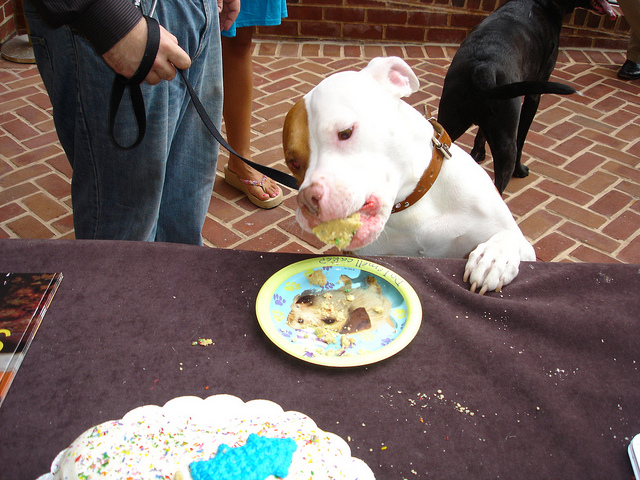
Stealing food is not only annoying, it can be dangerous if it contains harmful ingredients. The best thing to do is to teach your dog a leave it and a drop cue (for those times you are too late for leave it). While training, you need to manage the situation by not leaving food anywhere your dog might be able to get at it.
For the ambitious owner, teach your dog an auto leave it. This means, you don’t take anything unless I tell you too. Think about service dogs – they don’t steal food or even eat things they find on the floor. If you have the patience, it is definitely a nice thing to train any dog.
About the Author
Based in Wilsonville, Ore., animal lover Kristina N. Lotz is a Certified Professional Dog Trainer – Knowledge Assessed (CPDT-KA) and a member of the Dog Writers Association of America. She is the founder of A Fairytail House. In her spare time, she trains and competes in a variety of performance events with her Shetland Sheepdogs and caters to her two rescue kitties. She smartly married a Veterinary Technician, who helps keep the fur kids happy and healthy, and provides a quick resource for articles.

